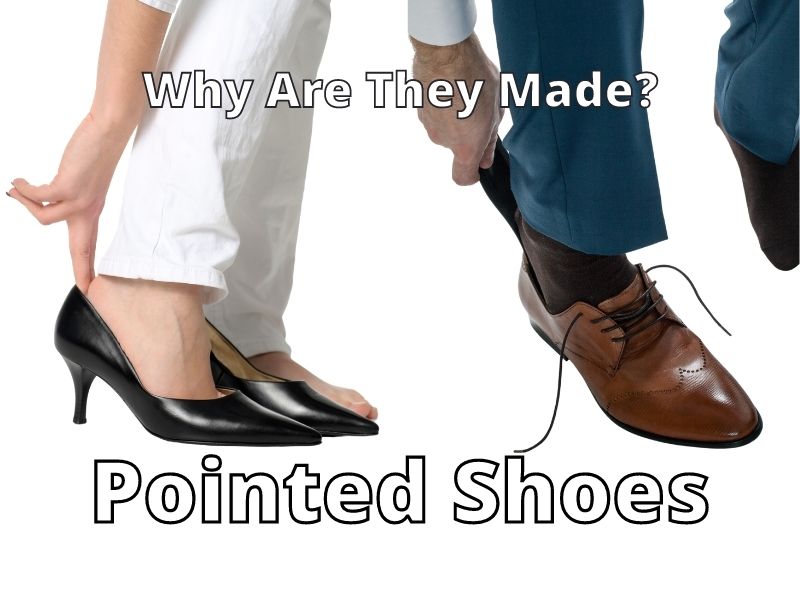Most the of shoes I have worn have a toe box that is narrower than my toes naturally lie when not wearing shoes. I never thought much about it until I noticed my toes seemed to squeeze together too much with some dress shoes that I’ve worn over the years.
Shoes come to a point because of the influence of history and the fashion industry. Shoe designers follow recent trends, and shoe companies try to sell what’s popular. Models and dancers use them to emphasize body lines and proportion because they are visually appealing when used correctly.
If you have ever worn shoes that were the correct size but felt your toes were being squished, you are not alone. Although trends may be shifting to less restrictive types of shoes, there are many reasons pointy shoes still have a big following. We’ll talk about just why these types of shoes are still in wide use today.
Why Does the Fashion Industry Love Pointy Shoes?
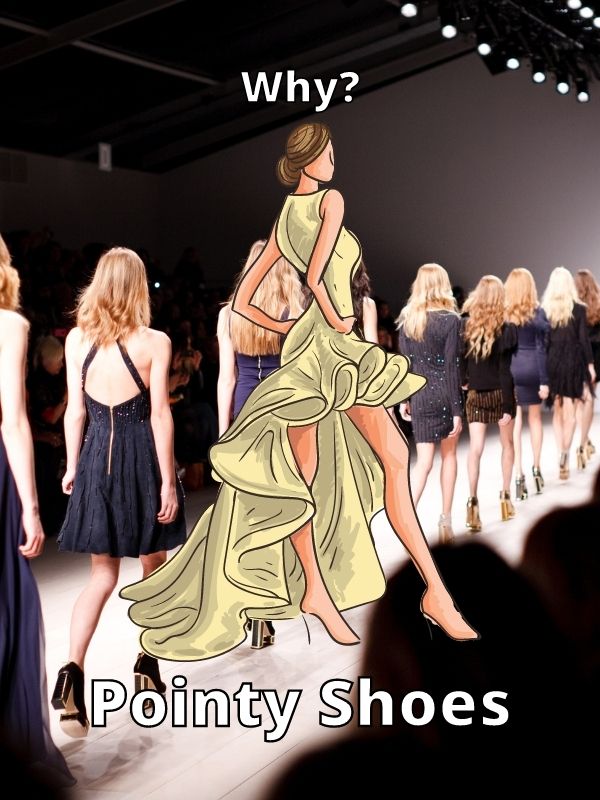
The fashion industry loves tall and thin models because they can display the designer’s creations so everyone can see them better and with more detail. A short person means less visual area.
Being tall means you stand out, and being thin means you are young and youthful. The same idea applies to long pointy shoes. Shoes can give you the impression of confidence and that a person is well put together. If their shoes match their outfit and everything looks nicely put together, people may feel impressed enough to notice.
Long pointy shoes display a sense of elegant fashion, showing off how nice the shoes look when you wear them. When you look at the entire person and they dress up with their nice shoes, the shoes can help make the entire outfit look pleasing.
According to Esquire.com “a more narrow shape and a pointy toe box give the illusion of length and provide balance and proportion.”
So, a pointy toe helps to lengthen your shoes, making them look thinner. Thin and long means you look better proportioned in the fashion world.
Where Did Pointy Shoes Come From? (History)
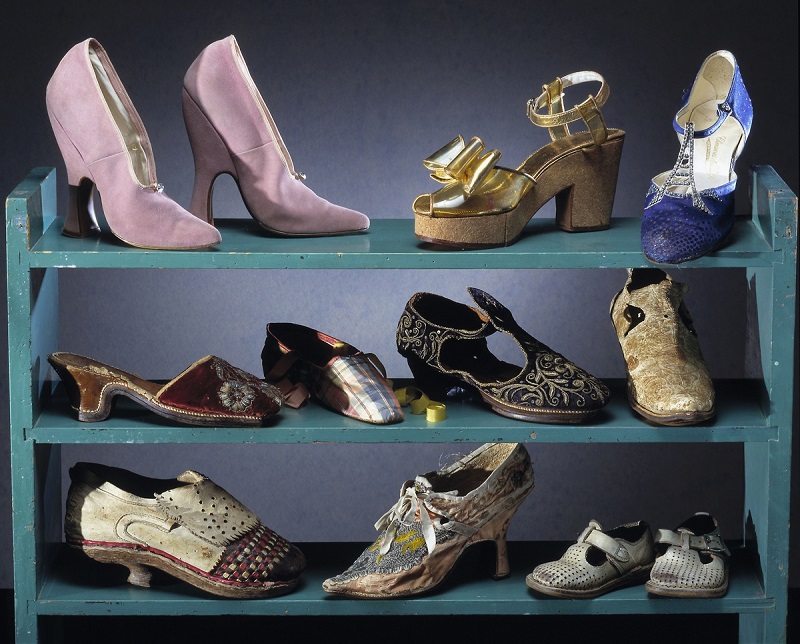
Pointy shoes have been around for a while. If you read my article about Why Were Shoes Invented you’ll see that back in the 13th and 14th century, shoes were made with pointy toe boxes. Shoes can be made for practical reasons, and these types of shoes are less likely to be pointed.
If you were making a shoe for a special ceremony or for fashion, then adding length to your shoes would be helpful in showing details and beauty. Pointy shoes became fashionable shoes for upper-class people in Europe, but eventually, there were laws in some places that prevented them from being made.
According to Wikipedia, both Edward IV and Charles V of France made laws that prevented the use of extra-long shoes. The reason for not wearing them may have been religious because a poem from that time period talks about not being able to pray because of long shoes.
In modern times, ever since the USA became a country, there have been various types of pointy shoes made. It’s kind of a natural way to make shoes. The pointiness of shoes may not have been for fashion’s sake but because making a shoe calls for creating a toebox.
One reason to make shoe pointy is that making a point could be easier when closing the toe box. It wasn’t until the early 1900s that shoes could be mass-produced with machines. This helped create new ways to make shoes.
Now shoes could be much easier and a round-toe box would be easier to make. Since the 1960s, pointy shoes have enjoyed popularity on and off, with the acceptance of pointy shoes in the mainstream around the early 1980s.

Why are Women’s Shoes Pointy?
Women’s shoes have always been at the forefront of fashion. The fashion industry, as mentioned before, has created long pointy shoes to make people look more proportioned and noticeable.
Women have traditionally been attracted to the idea of looking tall and attractive. With the creation of cheaper, taller, and unique shoes, women have been able to try on different styles and fashions fairly easily without breaking the bank.
Many women have more than a couple of pairs of shoes. Why? Because of the variety and relatively low cost of women’s shoes. Most people want to look attractive and presentable, and this is at the forefront of many women’s (and men’s) thoughts.

There are several reasons why women’s shoes are pointy.
One reason is that many women’s shoes have heels. The feeling of being taller appeals to many women. The unique fashion look of many shoes with pointy shoes and higher heels creates the demand for shoes with these attributes.
Another reason is because of the latest in fashion trends. Designers continue to make pointed shoes for models and celebrities, and the public wants to mimic the fashion they see to look as nice as the people on TV.
The fashion industry shapes what retail stores will buy. If you find a shoe in the store that has a pointy toe box, it’s likely that retailers are just following the current trends for what is in style at the time.
The overall appearance of a shoe will influence if it is made. For example, some of the shoes in the video above are too extreme for people to be comfortable wearing.
OVERALL APPEARANCE
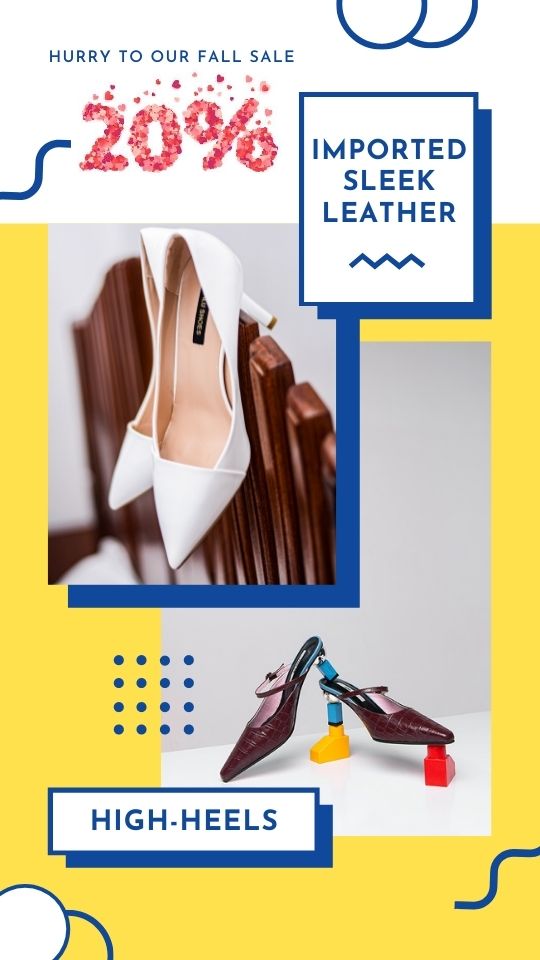
If a shoe looks good and is the right price, people will buy it. The retailer will sell their shoes at a discount to move them off the shelf for what is in fashion for next year.
At the same time, retailers would probably not sell you unpopular high heels. If the toe box was square like some men’s shoes, they would not sell very well. In this example, the shoe would look awkward and most people would likely not wear it. A high heel shoe lends itself to a pointed-toe box because it generally looks better.
Why Ballerinas Wear Pointe Shoes?
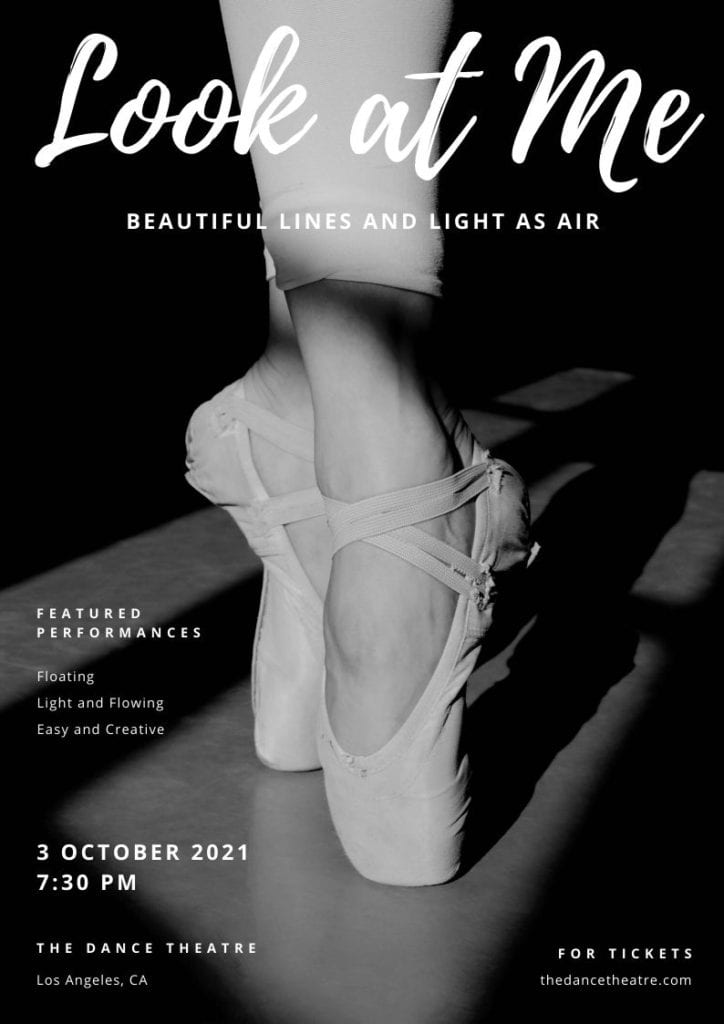
While pointe shoes aren’t very pointy, they do place an emphasis on controlling the foot to create a certain look. Pointe shoes aren’t used for walking or dressing to impress, but they do follow some patterns of the fashion industry that I find interesting.
Their goal is to allow the dancer to extend their feet in a way that gives the wearer a special presence when seen. Like pointy dress shoes, pointe shoes help you present yourself so others can see you.
Historically, ballet has been performed since 1573. (wikipedia.com) As seen in the image below, they dressed in a way to present themselves before the audience. This painting shows pointy shoes that may have been used in the performance of the time (1653).
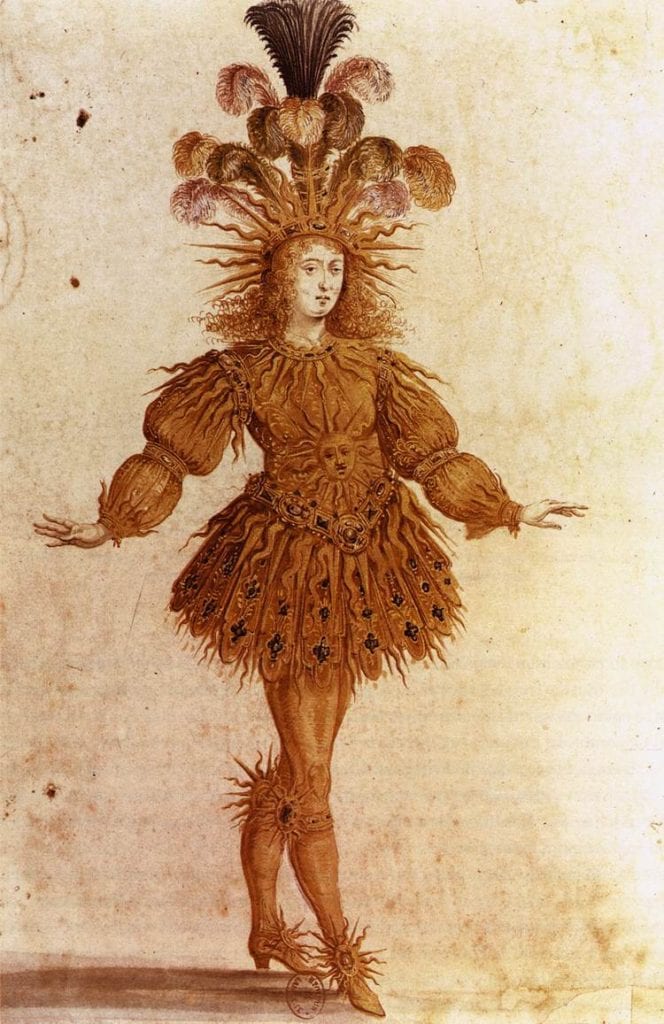
Pointe shoes are used to help a ballerina balance on their toes because it is visually appealing. A ballerina can look like they are dancing and moving in an artistic manner. Pointe shoes help the dancer look as if their body can be in one straight line without any awkward angles.
Just like the fashion industry, there’s an emphasis on line and appearance, so the subject is visually appealing.
Ballerinas try to give the impression that they are floating when performing their dance. They show they are dancing with easy and fluid movements. During fashion shows, models also try to emphasize movement and position to show off shoes so the observer finds it appealing.
Even though pointe shows can be hard on your feet, the art form requires ballerinas to use them because that’s how you look your best during a ballet. In a similar way, the fashion industry ignores normal foot biomechanics and makes shoes that are designed for presentation and appeal.
What Happens When I Where Pointy Shoes?
Maybe the reason that footwear fashion is changing to more thin and thick-soled flat footwear this year is that more people are placing value on their foot health. There’s so much more information about how our feet are supposed to work naturally, that consumers are savvier about finding shoes that are healthier for their feet.
What’s Wrong With Pointy Shoes?
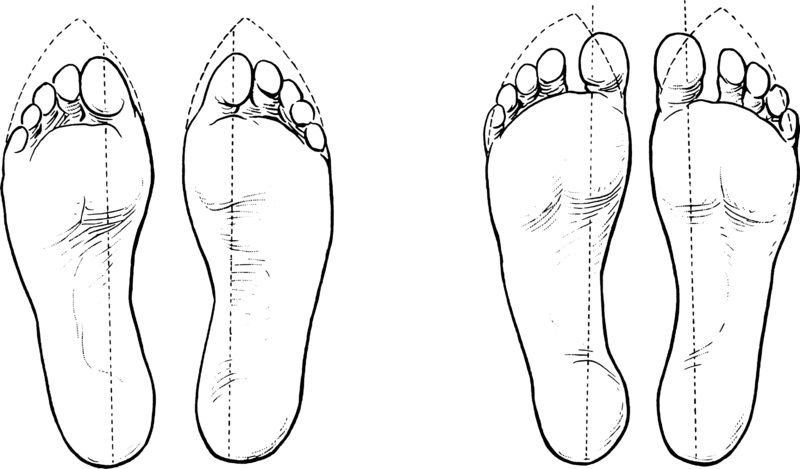
Some pointy shoes might be fine to wear if they allow enough room for the toes to move and splay a bit, but that’s usually not the case for almost all shoes, especially pointy shoes. In order for feet to stay healthy, they need to have a natural toe position.
Pointy shoes squeeze toes together and cause problems over time. Some of the problems that can occur in shoes that squeeze toes and feet are:
- Corns & Calluses
- Hammertoe
- Bunions
- Fallen Arch
- Foot Pain (Plantar Fasciitis)
- Weaker Foot Muscles
- Balance Problems
- Foot Alignment Issues (Could lead to knee and hip pain)
The main problem with these types of shoes is they bind your feet so they can’t move. With little ability to move your foot, your muscles remain inactive and start to get weaker. Weaker muscles mean problems can start to occur with your arch, plantar fascia, and foot alignment.
Many pointy toes squeeze and put pressure on the toes. This can result in stretched ligaments, misaligned toes, hammer toes, balance issues, corns, and calluses.
Having high heels can speed up this process because more pressure is being applied to your toes. But what about open-toed sandals, those should be OK, right?
Open-toed sandals might seem like a good idea because your toes are freer to move, but many still put lots of pressure on your toes and squeeze them. If you wear sandals, try finding ones with no heels and a more relaxed fit around the toes. All toes should be able to move freely.
What Shoes Are Best For My Feet and Toes?

To help prevent some of the problems that occur with pointy shoes, it is likely best to walk barefoot around the house and get plenty of exercise in regular athletic shoes that don’t squish your toes.
If you already have some of the problems mentioned above, consider talking to your doctor and asking what exercises you can do to develop your foot muscles and get your foot to a healthier place. Well-cushioned walking shoes, and possibly ones with arch support if your doctor suggests it, can help with pain reduction as you heal and start to get stronger.
For those who don’t have preexisting foot conditions, getting zero-drop shoes (see my article about Zero Drop Shoes) benefits can be a good step toward more foot strength.
WORK SHOES

When we work, we should have comfortable shoes on. There are many styles of business shoes that can look good and still not squeeze your foot. Try to find ones that have the most room in the toe box and have enough cushion to feel comfortable all day.
Many employers don’t mind if you wear sneakers as long as they don’t detract from a professional look. If you are afraid of what your boss will say, go see your doctor and ask them to write a note to your employer about your need to wear shoes that are healthy at work.
DRESS UP SHOES
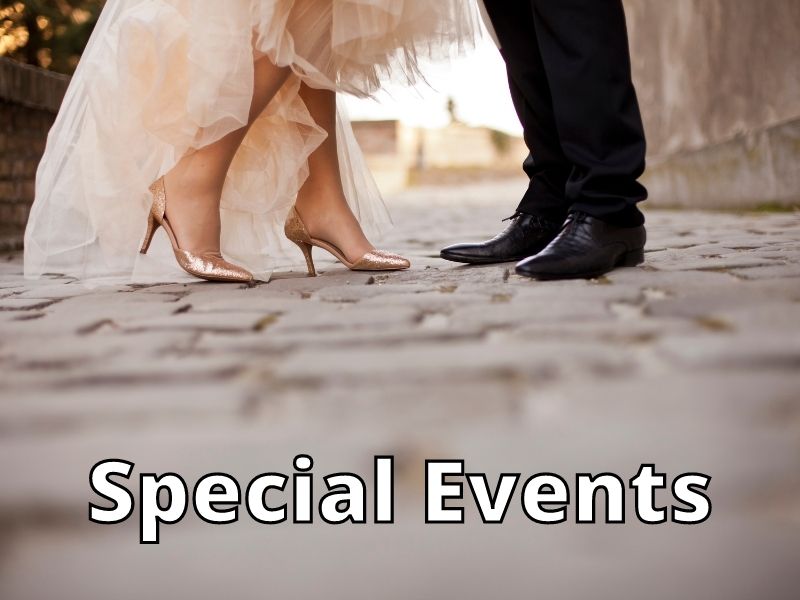
When you are going to a special event, it may be necessary to wear certain types of footwear. Weddings, dances, performances, and special events can all call for specific types of shoes.
One way you can ensure you get the most comfortable and healthy footwear during these events is to plan ahead, Talk to the people in charge of the event, and discuss your footwear needs.
You can find many dress shoes that are fairly comfortable to wear and don’t come to a point. These shoes can make a big difference over time with better foot health.
Final Thoughts
Shoes have had a long history of being pointy. Pointy shoes have been popular for a long time and can make people look nicer in some ways. While wearing them once in a while should be fine, it doesn’t mean we should wear them a lot.
We can be tempted to buy shoes that are the latest style in fashion because they go great with our outfits. Yet, at a certain point, we need to be concerned about what is happening to our bodies if we wear pointy shoes too long.
They will eventually cause problems with your feet and body over time. Now that shoe trends are changing to healthier choices for our feet, it is time to find some shoes that enhance our natural beauty without compromising our health.
Thanks for visiting Helpshoe.com

